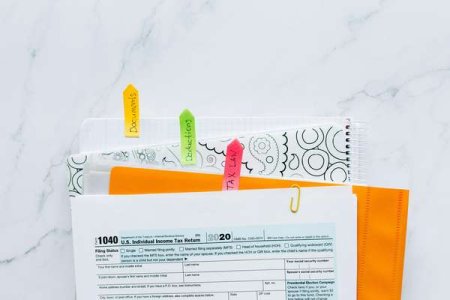Tax refund delays hit Americans hard—what’s behind the holdup?
- Replies 0
If you’re still waiting for your state tax refund to arrive in the mail, you’re not alone—and you’re not imagining things.
Across the country, thousands of Americans are facing unexpected delays in receiving their hard-earned tax refunds, all thanks to a behind-the-scenes snafu that sounds almost too simple to be true: a printer problem.
Let’s break down what’s really going on, what you can do, and how this year’s tax season is shaping up for older Americans.
The Printer Problem That Stopped the Checks
It all started with a sudden shutdown at Professional Mail Services, Inc., the company responsible for printing and mailing state tax refund checks and notices for several states, including North Carolina.
Without warning, the company closed its doors, leaving state Departments of Revenue scrambling—and taxpayers in the lurch.
For many, the experience has been frustrating and confusing. One North Carolina resident shared with local news that, after checking the state’s “Where’s My Refund?” tool and seeing his check was supposedly mailed, he waited…and waited.
Weeks later, still no check. When he called the Department of Revenue, he was told there was a “printer issue.” For someone who’s never had a problem in 30 years of filing, it’s been a “total debacle.”

He also added that he’s "Just very frustrated because I’m counting on this money. I need this money. I was expecting it several weeks ago."
If you’ve checked your refund status online and it says “Check mailed,” but your mailbox is still empty, this printer glitch could be the culprit.
What Are the States Doing About It?
State tax agencies are working to untangle the mess. North Carolina’s Department of Revenue assured, “The NC Department of Revenue is continuing to evaluate the impacts of notices and refund checks that were not printed or mailed by Professional Mail Services, Inc. Additional information will be provided as soon as possible.”
They’re evaluating which checks and notices were affected and developing a plan to get refunds out as quickly as possible.
A spokesperson reassured taxpayers, “The department is committed to serving our customers in the most efficient manner possible, and we are actively developing a plan to restore print and mail services.”
Also read: Tax season chaos: What’s delaying your refund now?
Why Your Refund Matters More Than Ever
For many Americans—especially those on fixed incomes or tight budgets—tax refunds aren’t just a bonus. They’re a lifeline.
A recent survey of 2,000 taxpayers found that nearly two-thirds have already spent or plan to spend their refunds on essentials like rent, groceries, and bills.
In fact, 80% of those who’ve received their refunds used them for necessities, not luxuries.
This year, the average refund was over $2,300, up from $1,700 last year. That’s a significant chunk of change, and for 61% of respondents, it’s a key part of their annual budget.

Why Are Refunds Higher This Year?
Interestingly, more Americans received larger refunds this year than they expected. Reasons include:
Also read: Filing frustrations? Here’s 4 reasons why your tax refund might be delayed–and what you can do about it!
How Long Should You Expect to Wait?
Normally, the time it takes to get your state tax refund depends on several factors:
This year, the printer issue has added even more uncertainty for those waiting on paper checks.

What Can You Do If You’re Still Waiting?
1. Check Your Refund Status:
Use your state’s “Where’s My Refund?” tool. For federal refunds, the IRS also offers an online tracker.
2. Contact Your State Department of Revenue:
If your status says "Check mailed" but you haven’t received anything, call your state’s tax office for an update. Be prepared for longer wait times, as many others are in the same boat.
3. Consider Direct Deposit Next Year:
If you’re able, opt for direct deposit when you file your taxes. It’s faster, more secure, and not dependent on a third-party printer.
4. Double-Check Your Filing:
Make sure your return was complete and error-free. Mistakes can cause additional delays.
5. Be Patient—But Persistent:
While it’s frustrating, know that state agencies are working to resolve the issue. Don’t hesitate to follow up if you need your refund urgently.
Looking Ahead: What to Expect for Next Tax Season
Tax season officially started on January 27, with the filing deadline on April 15. If you missed the deadline, you can still file for an extension (using IRS Form 4868), which gives you until October 15.
But remember: an extension to file is not an extension to pay any taxes owed.
The IRS says most refunds are issued within 21 days of filing, especially for e-filed returns with direct deposit. Paper returns, or those with errors, can take much longer.
In earlier news: IRS update: Some taxpayers set to receive smaller refunds–Here’s why!

Are you still waiting for your refund? Have you been affected by the printer glitch? How do you plan to use your refund when it finally arrives? Share your experiences, frustrations, and tips in the comments below!
Across the country, thousands of Americans are facing unexpected delays in receiving their hard-earned tax refunds, all thanks to a behind-the-scenes snafu that sounds almost too simple to be true: a printer problem.
Let’s break down what’s really going on, what you can do, and how this year’s tax season is shaping up for older Americans.
The Printer Problem That Stopped the Checks
It all started with a sudden shutdown at Professional Mail Services, Inc., the company responsible for printing and mailing state tax refund checks and notices for several states, including North Carolina.
Without warning, the company closed its doors, leaving state Departments of Revenue scrambling—and taxpayers in the lurch.
For many, the experience has been frustrating and confusing. One North Carolina resident shared with local news that, after checking the state’s “Where’s My Refund?” tool and seeing his check was supposedly mailed, he waited…and waited.
Weeks later, still no check. When he called the Department of Revenue, he was told there was a “printer issue.” For someone who’s never had a problem in 30 years of filing, it’s been a “total debacle.”

Many Americans are facing delays in receiving their state tax refunds due to a sudden shutdown of a printing and mailing company used by the Department of Revenue, with residents in North Carolina particularly affected. Image source: Polina Tankilevitch / Pexels.
He also added that he’s "Just very frustrated because I’m counting on this money. I need this money. I was expecting it several weeks ago."
If you’ve checked your refund status online and it says “Check mailed,” but your mailbox is still empty, this printer glitch could be the culprit.
What Are the States Doing About It?
State tax agencies are working to untangle the mess. North Carolina’s Department of Revenue assured, “The NC Department of Revenue is continuing to evaluate the impacts of notices and refund checks that were not printed or mailed by Professional Mail Services, Inc. Additional information will be provided as soon as possible.”
They’re evaluating which checks and notices were affected and developing a plan to get refunds out as quickly as possible.
A spokesperson reassured taxpayers, “The department is committed to serving our customers in the most efficient manner possible, and we are actively developing a plan to restore print and mail services.”
Also read: Tax season chaos: What’s delaying your refund now?
Why Your Refund Matters More Than Ever
For many Americans—especially those on fixed incomes or tight budgets—tax refunds aren’t just a bonus. They’re a lifeline.
A recent survey of 2,000 taxpayers found that nearly two-thirds have already spent or plan to spend their refunds on essentials like rent, groceries, and bills.
In fact, 80% of those who’ve received their refunds used them for necessities, not luxuries.
This year, the average refund was over $2,300, up from $1,700 last year. That’s a significant chunk of change, and for 61% of respondents, it’s a key part of their annual budget.

Most taxpayers plan to use their refunds for essentials such as rent, groceries, and bills, with recent surveys showing a significant increase in the average refund amount received this year compared to last year. Source: Nataliya Vaitkevich / Pexels.
Why Are Refunds Higher This Year?
Interestingly, more Americans received larger refunds this year than they expected. Reasons include:
- Working more hours or taking on extra jobs (37%)
- Adjusting tax withholdings or deductions (31%)
- Getting a raise or promotion (16%)
Also read: Filing frustrations? Here’s 4 reasons why your tax refund might be delayed–and what you can do about it!
How Long Should You Expect to Wait?
Normally, the time it takes to get your state tax refund depends on several factors:
- How you filed: E-filing is usually much faster than mailing a paper return.
- State processing times: Each state has its own system and speed.
- Errors or incomplete returns: Mistakes can slow things down.
- Current events: As we’ve seen, unexpected issues like the printer shutdown can throw a wrench in the works.
This year, the printer issue has added even more uncertainty for those waiting on paper checks.

Taxpayers who file their returns electronically generally receive their refunds faster than those who submit paper returns, with errors or incomplete forms potentially leading to further delays. Image source: Mikhail Nilov / Pexels.
What Can You Do If You’re Still Waiting?
1. Check Your Refund Status:
Use your state’s “Where’s My Refund?” tool. For federal refunds, the IRS also offers an online tracker.
2. Contact Your State Department of Revenue:
If your status says "Check mailed" but you haven’t received anything, call your state’s tax office for an update. Be prepared for longer wait times, as many others are in the same boat.
3. Consider Direct Deposit Next Year:
If you’re able, opt for direct deposit when you file your taxes. It’s faster, more secure, and not dependent on a third-party printer.
4. Double-Check Your Filing:
Make sure your return was complete and error-free. Mistakes can cause additional delays.
5. Be Patient—But Persistent:
While it’s frustrating, know that state agencies are working to resolve the issue. Don’t hesitate to follow up if you need your refund urgently.
Looking Ahead: What to Expect for Next Tax Season
Tax season officially started on January 27, with the filing deadline on April 15. If you missed the deadline, you can still file for an extension (using IRS Form 4868), which gives you until October 15.
But remember: an extension to file is not an extension to pay any taxes owed.
The IRS says most refunds are issued within 21 days of filing, especially for e-filed returns with direct deposit. Paper returns, or those with errors, can take much longer.
In earlier news: IRS update: Some taxpayers set to receive smaller refunds–Here’s why!
Key Takeaways
- Many Americans are facing delays in receiving their state tax refunds due to a sudden shutdown of a printing and mailing company used by the Department of Revenue, with residents in North Carolina particularly affected.
- Most taxpayers plan to use their refunds for essentials such as rent, groceries, and bills, with recent surveys showing a significant increase in the average refund amount received this year compared to last year.
- Taxpayers who file their returns electronically generally receive their refunds faster than those who submit paper returns, with errors or incomplete forms potentially leading to further delays.
- The IRS recommends filing by the April 15 deadline or applying for an extension until October 15 if needed, and offers online tools like “Where’s My Refund?” for tracking the status of tax returns and refunds.
Are you still waiting for your refund? Have you been affected by the printer glitch? How do you plan to use your refund when it finally arrives? Share your experiences, frustrations, and tips in the comments below!






